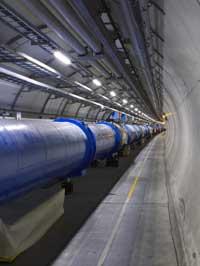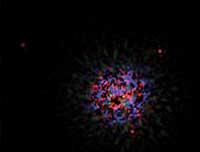Harvest of science 2008

However, this does not prevent us from making a compilation of last year's news. What criteria is due to? We will focus on the most listened to news and some of the research that has had the most impact on society.
Incidents LHC
If last year there was some scientific subject by mouth, that was the famous LHC. The construction of the world's largest, most powerful and costly particle acceleration tool was completed, inaugurated on 10 September.
The fact that the LHC was among the most heard news of the year could only be because it was the most powerful tool. But in addition, more than one launched an alarm cry. There and here it was spreading that the particle accelerator was dangerous, since by accelerating the particles could form a small black hole. They said that this black hole could swallow and remove part of Europe.
The truth is that there was no way to find out if this happened, since on the nine days of its start-up it suffered an electrical error that forced it to stop to heal.
It seems to be ready for the summer of 2009. But let no one worry. We should not be afraid of the aforementioned sensationalist risk. Scientists do not know if small black holes can form and if they will form. But even if it were formed, all predictions suggest that it would disappear long before the second after its creation, it would volatilize.

Many things in space
In spatial issues there was also news that last year reached beyond the scientific field. For the first time, astronomers have managed to see directly the planets spinning around a star that is not ours. In recent months, half a dozen exoplanets have been described, which, according to Science magazine, has been the second most prominent news of the year.
It is not easy for astronomers to detect planets around other stars. On the one hand, the planets far from us are difficult to perceive in terms of size and, on the other, the stars are much brighter than the planets and cover the low light that reflects the planets around. Thus, scientists have had to develop special techniques to somehow cover the brightness of stars.

Retraction of cells in time
Another important news of last year took place in cell biology. For the first time, certain cells of the body of adults acted as cells from another body part. For example, the first group that released this type of news took cells from the skin of a woman of about 80 years, who managed to turn them into neurons.
This technique is known as cell reprogramming. In the last end, a cell manages to stop fulfilling the functions it had until then and work on the function that scientists want.
A dozen groups managed to reprogram the cells, but have not yet managed to figure out what processes are behind this reprogramming. In this year that we have just released, scientists will surely follow that path.
In addition to cells, like last year, we will have news or outstanding discoveries. But for this we have to leave the scientists working. Let's give them a year and see what things they have!
Published in Deia
Buletina
Bidali zure helbide elektronikoa eta jaso asteroko buletina zure sarrera-ontzian











